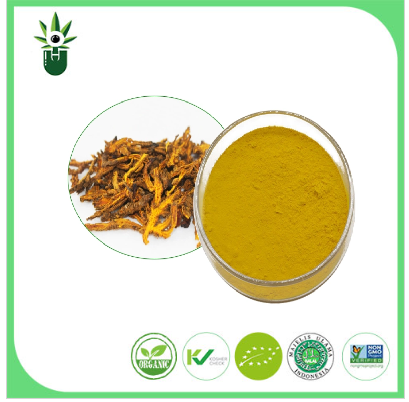
- English
- Español
- Português
- русский
- Français
- 日本語
- Deutsch
- tiếng Việt
- Italiano
- Nederlands
- ภาษาไทย
- Polski
- 한국어
- Svenska
- magyar
- Malay
- বাংলা ভাষার
- Dansk
- Suomi
- हिन्दी
- Pilipino
- Türkçe
- Gaeilge
- العربية
- Indonesia
- Norsk
- تمل
- český
- ελληνικά
- український
- Javanese
- فارسی
- தமிழ்
- తెలుగు
- नेपाली
- Burmese
- български
- ລາວ
- Latine
- Қазақша
- Euskal
- Azərbaycan
- Slovenský jazyk
- Македонски
- Lietuvos
- Eesti Keel
- Română
- Slovenski
- मराठी
- Srpski језик
Are there any dangers when using plant extracts?
2024-09-24

What are the possible dangers of using plant extracts?
Although plant extracts have many benefits, they also have some potential dangers, mainly as follows:
Can plant extracts cause allergies?
Yes, some people may be allergic to certain plant extracts, especially those who are allergic to plants of the same genus or family.
Can plant extracts interact with other drugs?
Yes, some plant extracts have the potential to interact with other drugs, either by enhancing or inhibiting their effects, or by causing adverse reactions.
Can plant extracts be toxic?
Yes, some plant extracts contain toxic substances, such as alkaloids, glycosides, and essential oils, which may cause poisoning if used improperly or excessively.
How to use plant extracts safely and effectively?
To use plant extracts safely and effectively, it is important to follow the recommended dosage and administration methods, to avoid using them excessively or for a long time, and to pay attention to possible allergic reactions or adverse effects.
Conclusion
In conclusion, plant extracts have many benefits but also have potential dangers. Therefore, it is important to use them safely and properly, under the guidance of professionals. As a leading supplier of natural plant extracts and other biological products, Qingdao BioHoer Biotech Co., Ltd. is committed to providing high-quality and safe products and services to customers worldwide. If you have any questions or needs, please feel free to contact us at support@biohoer.com.
References
1. Zuo, G.-Y., Zhang, X.-J., Yang, C.-X., & Han, J. (2016). The genus Scutellaria an ethnopharmacological and phytochemical review. Journal of Ethnopharmacology, 182, 90-107.
2. Huang, W.-Y., Cai, Y.-Z., Zhang, Y., & natural Wang, C.-Z. (2010). A Review of the Hypoglycemic Effects of Five Commonly Used Herbal Food Supplements. Recent Patents on Food, Nutrition & Agriculture, 2(2), 111-117.
3. Jäger, A. K., Saaby, L., & Flavonoids Rasmussen, H. B. (2011). Plant-derived and dietary phytochemicals importance in human health: Bioavailability, antioxidant activity, and mechanisms of action. Plant Science, 181(3), 230-245.
4. Li, Y., & Xu, C. (2017). Antimicrobial activity and safety of extracts from Chinese toon tree (Toona sinensis). Food Chemistry, 220, 61-66.
5. Mishra, B. B., Tiwari, V. K., & Natural Sangwan, N. S. (2011). Phytochemical and therapeutic potential of cucumber. Fitoterapia, 82(2), 96-104.
6. Xuan, H., Zhao, J., & natural Yao, Z. (2011). Antifungal activity and inhibitory kinetic of fatty acids from Sparganium stoloniferum Linne against plant pathogenic fungi. Food Chemistry, 124(4), 1571-1575.
7. Yang, X., Summerbell, R. C., & Ni, Y. (2009). Antifungal activity of cinnamon oil against Candida albicans. Acta Pharmacologica Sinica, 30(9), 1159-1163.
8. Wu, L.-C., Huang, Y.-T., & natural Huang, W.-C. (2013). Antioxidant and Antimicrobial Activities of Bupleurum kaoi Liu (Chao et Chuang) Extracts Fractions. Journal of Food Science, 78(4), C536-C543.
9. Mukherjee, P. K., Harwansh, R. K., Bahadur, S., & natural Banerjee, S. (2011). Antibacterial Efficacy of Nelumbo nucifera (Nymphaeaceae) Extracts and Enterocin. International Journal of Pharma and Bio Sciences, 2(3), 518-525.
10. Clark, A. M., Natural El-Feraly, F. S., & Li, W.-S. (1981). Antimicrobial activity of phenolic constituents of Magnolia grandiflora L. Journal of Pharmaceutical Sciences, 70(8), 951-952.



